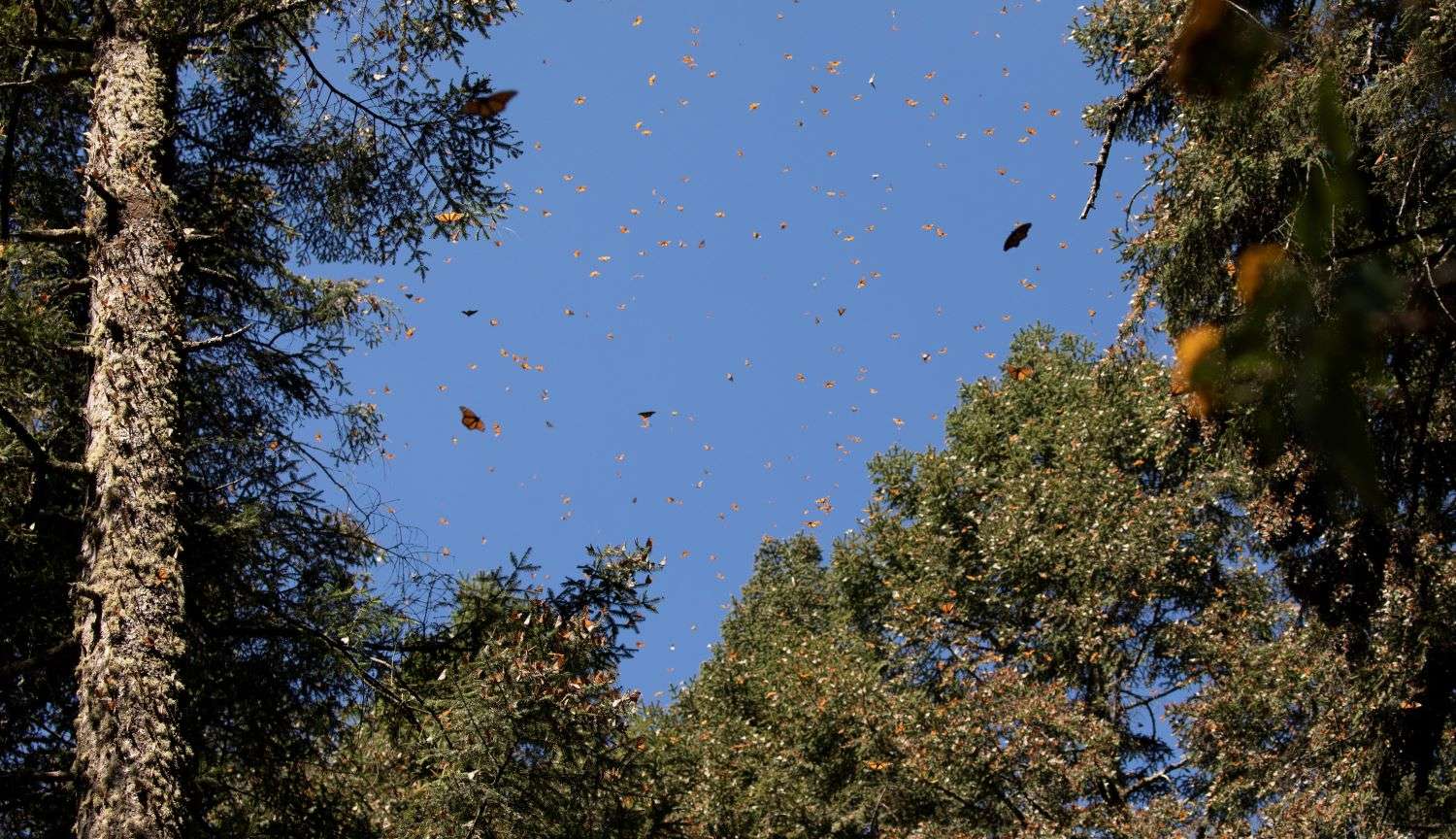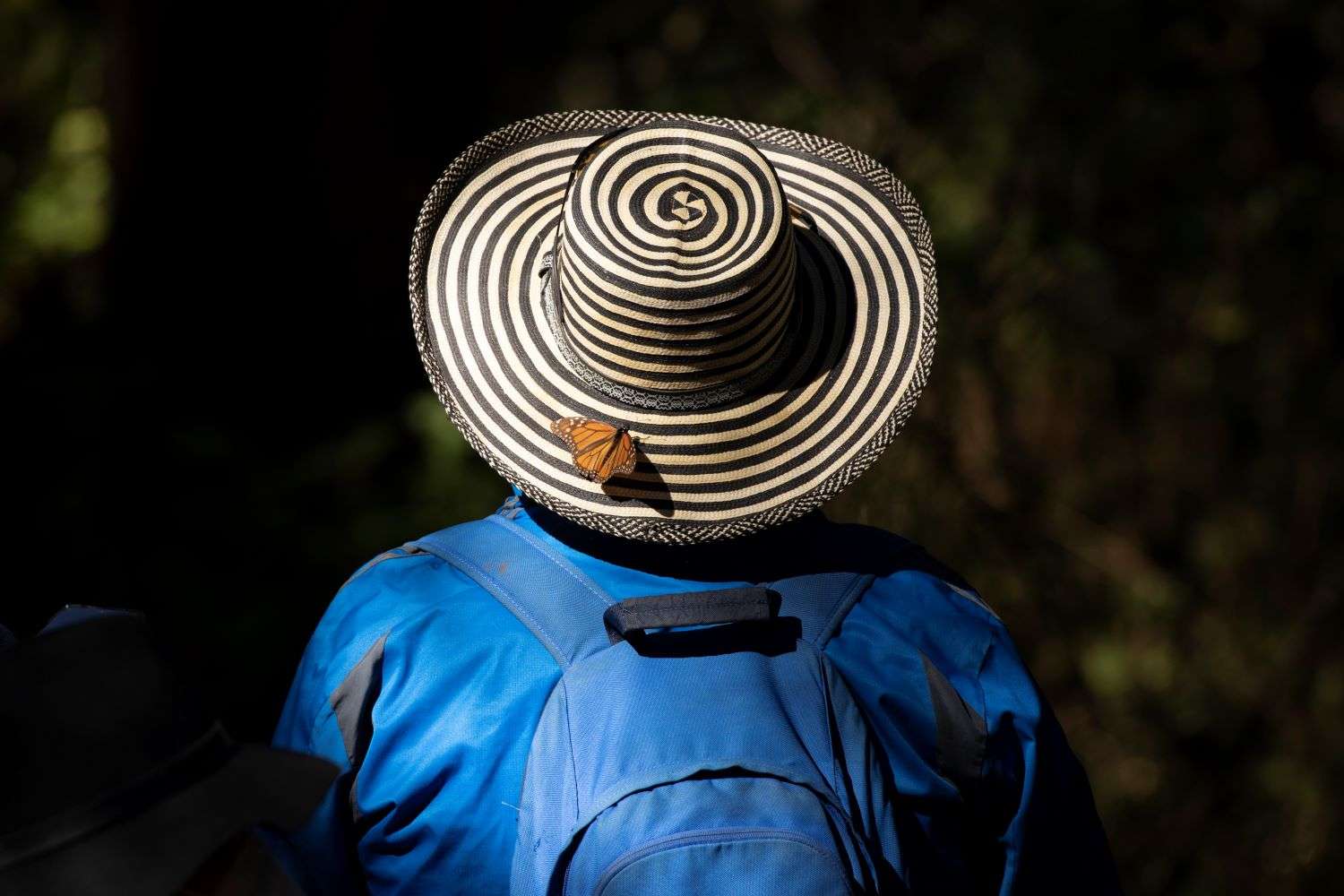
The playful charm that butterflies radiate as they flit from colorful asters to goldenrods to milkweed is undeniable. Of the 750 species of butterflies in the United States, the monarch (Danaus plexippus) - with its bright orange-red wings with black veining and white spots along the edges - may be the most well-known and easily recognizable.
But more than just a pretty creature to observe, the monarch butterfly is one of our most important pollinators. For this reason, monarch butterfly migration provides an invaluable service that is absolutely essential for ecosystems to thrive. Thanks to monarchs (as well as other butterflies and bees), we have many flowers and food staples that we enjoy, like squash and blueberries.
Oriental monarch butterflies: species in decline
While we've seen monarch numbers rise and fall slightly year after year, the eastern population of North American monarch butterflies (the ones that breed east of the Rocky Mountains) has unfortunately been in steady decline, on average, over the past two decades.
The butterflies' numbers can be estimated where they winter, and in the case of the monarch, they always return to a certain part of the central highlands of Mexico. Every year for the past 17 years, World Wildlife Fund Mexico, in coordination with local communities and partners, has assessed the number of monarchs in the Monarch Butterfly Biosphere Reserve. Since it would be impossible to count each individual butterfly to determine the population, the team instead measures the area of forest the monarchs inhabited during their time there, providing an indicator of their population status.
About 45 acres of dense spruce forest in Mexico's King Region were covered with the beautiful creatures in the winter of 1995-1996, but during the 2003-2004 season, scientists recorded only 27.5 acres of forest cover. Since then, scientists have documented a continuous downward mean trend. According to the most recent information, in the winter of 2020 King's Forest presence occupied just over 5 acres - a whopping 26% drop from the previous year.
The disappearance of large areas of native plant habitat is a major contributor to declining pollinator numbers worldwide, as is climate change. For monarchs, if temperatures rise too much during the spring, they migrate further north than before. Then when winter comes, they end up with an unexpectedly longer trip to Mexico. This overburdens them and can greatly reduce their reproduction. Increase the use of herbicides and pesticides and reduce milkweed. Asklepiasthe only plant where monarchs lay their eggs - also adds to the perfect storm for these hard-working creatures.
Can Monarch Migration Aid Help Save the Environment?
Monarch migration has more to offer us than pollination. they Unique migration inspires interest in the natural world across the entire continent. Weighing no more than a paperclip, these tiny insects play a mind-boggling two-way migration that their great-grandchildren will have to finish for them. The last generation of kings to be born in the United States and Canada is the immigrant generation known as "Methuselah". These monarchs delay their sexual maturity in order to be able to make the long journey of fall migration down to the wintering grounds of Mexico - a place these individuals have never been before. In fact, the last Methuselah generation of kings often live up to seven or eight months out of necessity (most generations live only four to five weeks on average). These kings know the right path to migrate even though they have never migrated before. They are guided by their internal GPS, and this mysterious method of navigation is one of the many characteristics that make monarchs such an attractive species.

The adventure from the United States and Canada to central Mexico completes the annual life cycle of monarchs. Once the northward migration begins, the monarchs become sexually mature, mate, and lay eggs on their exclusive caterpillar-host plant, the milkweed. After laying eggs as the last to prey, the adults die, and their offspring continue migrating north at a rate of about 100 miles per day. It usually takes three to five generations of monarch butterflies to complete the annual migration and resettlement of the eastern United States and southern Canada.
Monarch butterflies matter Cultural meaning within Mexican culture. For the indigenous Purépecha communities living in the central highlands, the annual return of these butterflies signaled that it was time to harvest their corn crops. Kings were referred to as Baracata, or "harvest moth". The Purépecha also believe that the kings who arrive each year are the spirits of their returning ancestors, and this belief continues to influence modern Mexican celebrations such as the Día de los Muertos. Monarchs return to Mexico continually around November 1 each year, announcing their arrival in the forests with the audible beating of millions of butterflies' wings. On November 1, many Mexican families celebrate Día de los Inocentes, a day to honor children who have passed, and on November 2, families celebrate Día de los Muertos to welcome the spirits of their deceased family members and support their transition to the afterlife. Many indigenous groups believe that after death, spirits live on through nature and the environment - which says a lot about how much they value nature. Imagine the profound cultural and psychological impact if butterflies did not appear for one year.
"When you stand in a royal sanctuary, your spirit is shaken and your life is changed," Mexican butterfly conservationist Carlos Gottfried said. If you've ever seen a king caterpillar or an adult cocoon emerging from its cocoon, you know how exciting this can be. But the chance to see those bright orange wings resting on every inch of every branch of every branch of every tree in a densely populated forest is to be a privileged and revered witness to one of the most spectacular wildlife events in the world. The trunks and branches begin to seem to quiver, then as the sun rises to warm them, hundreds of thousands of monarch butterflies fly up into the contrasting bright blue sky, often landing on the hats and shoulders of the adorable visitors. The air actually whizzed with their movement. No matter how serious a traveler or scientist, it's hard not to be instantly transported into a state of childish joy, vowing to protect these magical creatures at any cost.

during our NatHub Expedition to the Central Highlands of MexicoNot only do we experience this magical event for ourselves, but we also learn about efforts to preserve this fragile forest ecosystem that is key to the survival of royalty. Find out what WWF-Mexico is doing with local communities to protect butterfly habitat. Planning a visit to the Monarch Butterfly Biosphere Reserve is one way to help, as this is a clear, first-hand example to locals that ecotourism can be a viable and sustainable source of economic livelihood - even more so than logging.
There are other ways to support royalty, too. Even if you only have a small yard, planting zinnia, cosmos, lilacs, butterfly bush, goldfish, and of course, milkweed can greatly support tired migrating monarchs. But most of these plants don't flower until summer, and the little butterflies that start making their way north in the spring need all the help they can get. The spider milkweed is an early type of milkweed and can be very useful to new travelers. Common chives, Siberian wall flower and May Night salvia are also early blooming plants that butterfly lovers should consider planting. Together, we can help support these wonderful and mysterious creatures.
Source link
0 Comments